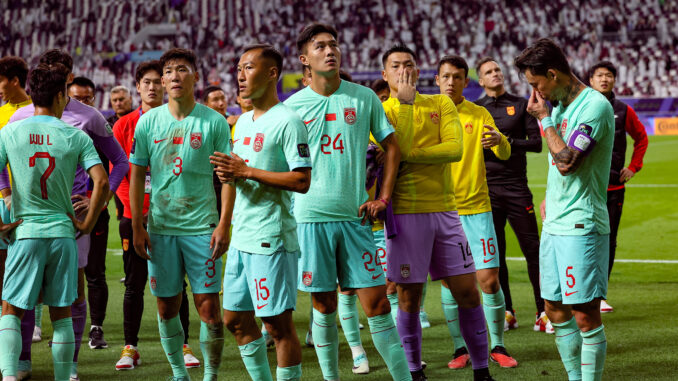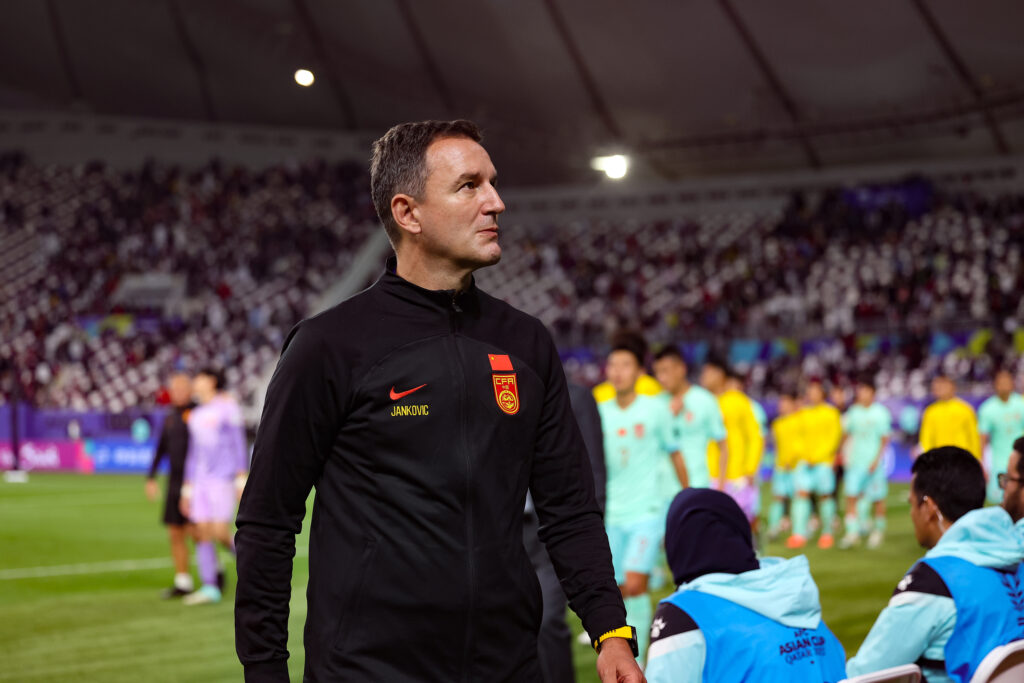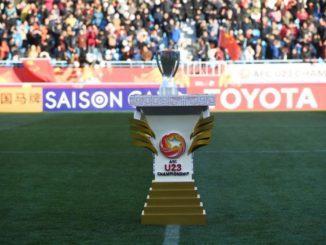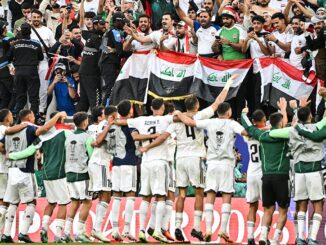
Chinese football is in trouble. Big trouble.
That might seem like stating the bleeding obvious, like boldly claiming that the sky is blue or the grass is green, but it’s worth repeating nonetheless.
When it comes to Chinese football there is little in the way of green grass or blue sky, just dark clouds as far as the eye can see.
If it’s not the failure of the national team, it’s the state of the domestic Super League – which, incidentally, just saw another two historic clubs fold in the past few weeks – or the long list of officials facing charges of bribery and fraud.
While it’s safe to say there was little in the way of expectations for China coming into this AFC Asian Cup, given the composition of Group A it still presented an opportunity for the national team to provide some respite to the endless stream of negativity engulfing the game.
Instead, their miserable showing has only added to the darkening mood within the country.
“The club dissolutions and the national team’s shameful performance in the international competition offer us a glaring portrayal of the current Chinese soccer landscape,” was the scathing assessment of the CCP-aligned Global Times in the aftermath of China’s exit.
“You reap what you sow. Clubs that found themselves unable to function effectively are paying the price for their imprudent investments in high-profile foreign coaches and players years ago.
“The misguided focus on instant success, at the expense of fostering sustainable development, has led Chinese soccer down a perilous path with no promising outcomes.
“It was the sheer disregard for the natural law of soccer development that has burdened the clubs with devastating debt and left stakeholders behind bars.
“The blind pursuit of short-term victories has closed the door for the long-term growth and prosperity of the sport in China.”
As the article articulates in no uncertain terms, these results didn’t happen in a vacuum. They are, rather, the natural outcome after years of economic mismanagement that has seen countless clubs fall by the wayside, of a youth development failure that saw China enter the Asian Cup with the second oldest squad, and a global pandemic that destroyed whatever was left of football’s burgeoning boom.
The fans have already vented their displeasure, with many calling for coach Aleksandar Janković to be removed from his post. That may happen, it’s hard to keep your job after such a failure, but doing so would just be window dressing, it won’t solve the problems of Chinese football it will just pass them into a different pair of hands.

The failure that wasn’t meant to be
As Tajikistan celebrated wildly on one side of Doha, on the other it was emotion of a very different kind after China’s 1-0 loss to Qatar.
While there remained the smallest glimmer of hope that they could still progress, any hope they did have was extinguished 24 hours later as Syria’s victory over India ensured China could no longer finish as one of the four best third placed teams and thus qualify for the knockout rounds.
To be brutally honest, this China side has no place in the knockout rounds of the Asian Cup. Their paltry tally of two points, which still flatters them given their performances, is their worst return in history. Never before have they failed to win a game in the group stage of the Asian Cup.
The embarrassment of not having scored a goal just adds further salt into an already gaping wound.
The irony of this being their worst ever Asian Cup is that this was a tournament they were meant to host.
This tournament was meant to be a crowning moment for Chinese football, a celebration of everything they had achieved over the previous decade and taste of what was to come when (not if) they hosted the FIFA World Cup.
When the bid was announced, Chinese football was booming. Nothing, it seemed, could dampen their ambition. Chinese corporations left and right were falling over themselves to get involved in football, and while they may have had ulterior motives for doing so, their presence added to the largesse.
Players and coaches from around the world were being lured to the Chinese Super League, while lofty and ambitious plans for infrastructure and youth development were established with the aim of turning China into a global football superpower.
Embed from Getty ImagesHosting a World Cup was not only on the table, it was considered a fait accompli, as world football came to terms with a new era for the global game that had China as an increasing power; certainly off the field and with an expectation that that would soon be matched by on-field performances, too, especially with the long-overdue focus on youth development.
But, as we have since found out, it was all smoke and mirrors. A house built on quicksand.
Take, for example, the famed Evergrande Football Academy, complete with its Hogwarts-style campus that became the poster for China’s footballing ambitions.
The largest academy in the world, it was claimed, football pitches are far as the eye can see, with thousands of children training every day under the guidance of an armada of Spanish coaches.
How could they not succeed? And yet, they haven’t. A decade on and rather than the academy churning out a production line of talent, there’s barely even a trickle.
The club aligned with the academy, the once-mighty Guangzhou Evergrande, are a shell of their former self, languishing in the second division and reduced to crowdfunding and leasing club trophies to pay off its debt and stay afloat.
Those nights celebrating AFC Champions League success at a sold-out Tianhe Stadium are but a distant memory.
Despite their fall from grace, they can consider themselves one of the lucky ones. So many clubs haven’t survived at all, and just in the last fortnight another two – Dalian Pro and Shenzhen FC – have joined them on the scrap heap, unable to continue under the suffocating weight of their debt.
You can be sure there are others in similar financial distress. In total, seven clubs from the CSL have folded in the past five seasons, while 39 clubs at all level have shut up shop since the start of the COVID-19 pandemic in 202.
Sadly, Shenzhen and Dalian Pro wont be the last clubs to dissolve, but with each one that does Chinese football sinks a little further into the abyss.
What now?
There is no easy solution, no short-term fix that will get Chinese football moving forward again.
The common refrain over the years is how can a country of one billion people not find eleven quality players for the national team?
There is no single answer to that question, more a tangled web of socio-cultural, economic and political realities that together have conspired to create a landscape clearly incapable of doing so.
If results at youth level are seen as an indicator of future success, then the writing has been on the wall for almost two decades given their repeated failures at all age groups.

Outside of hosting the Olympics in 2008, China has never qualified for that tournament, while their last appearance at either the U17 or U20 World Cups was back in 2005.
They didn’t even get through qualifying for the AFC U16 Championships in 2016 and 2018.
Not only does that explain their current woes, it also offers no glimmer of hope for the future.
Not even the big boom of the 2010s could alter the course, if anything it simply masked over decades of systemic failure that would one day come home to roost.
Today is that day.
Photo: Asian Football Confederation
Listen to The Asian Game Podcast as we review the action from MD2 of the AFC Asian Cup 2023




